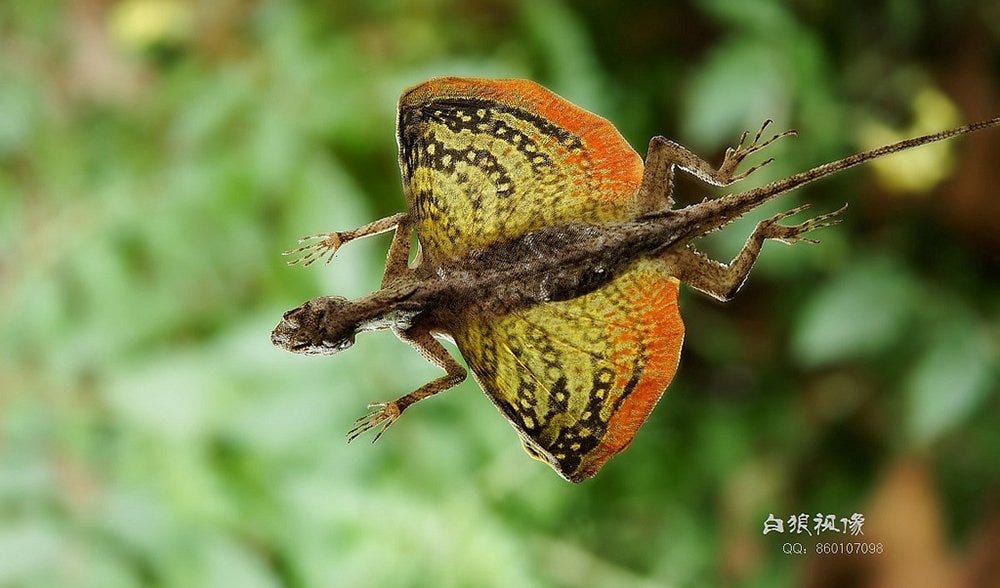A dinosaur is born (engineered)!
The long awaited engineered dinosaur could be born --- and it will start from a chicken

I started following the work of Jack Horner, who some say is the world’s most famous paleontologist, when he claimed he could build a dinosaur from a chicken.1 New technology and CRISPR-Cas9 and newer versions of these genetic engineering scissors and pliers have been successfully used on farm animals for particular characteristics for decades, now, so it was not a startling thought. Jurassic Park also made it more believeable, almost expected.
So, if he could build a dinosaur why not a dragon, I thought?
In 2009, Jack Horner first proposed re-creating a small dinosaur by using ancient DNA found in what we recently learned are its descendants — birds. In this case, he proposed using a chicken. Genetic engineering with ambitious plans like these often fail. There is a high likelihood of failure even for what seems a fairly simple genetic engineering task. The team that proposed glow in the dark plants had to abandon the project and fold the crowd funding effort when they realized the plant could not produce enough energy to fuel the biological mechanism to produce the light.2 So even a modest project like this, is still a long shot. A monstrous project (no punintended) to build a dinosaur is a moon shot.
In 2016, in Chile, scientists grew dinosaur legs on chickens ostensibly to study how evolution may have occured. To do this, scientists allow the expression of a gene called Indian Hedgehog (IHH) to inhibit the development of modern chicken legs, which allowed the ancient dinosaur-like legs develop.3 They were examined in the embryo stage only, so none of them were allowed to hatch.
In 2017, a Harvard and Yale team of scientists created a chicken with a dinosaur snout in place of the beak. This was also done by inhibiting particular genes.4 In 2019, a father and daughter wrote a whimsical book about how a dragon could be engineered using biotechnologies.5 It was classified as science fiction but it was based on plausibilities in genetic engineering and dragon stories.
Does all this mean we could create a dragon? Or should build a dragon? (“Could” is the technology question and “should” is the ethics question.) Before you dismiss this idea completely, note that you can find in your pet store, fish that are engineered to glow in the dark and come with black light accessories! This was the result of a successful insertion of genes to produce bioluminescence in fish (the similar experiment that failed in the plant). The idea that more engineered pets will follow is not completely unexpected.
Who regulates this, you might ask? You might expect these glowing fish to be regulated by FDA or EPA or USDA, but the agencies have decided it does not fall under any statute that would require regulation like engineered farm animals, for example. State and local governments can regulate in this space and some do try to prohibit activities like releasing your pet into the wild which would also include glowing fish. So the opportunities to engineer pets are seemingly endless at this point.
However, if you are genetically engineering (GE) a pig, sheep or goat, for example, you will need to notify USDA and follow a regulatory pathway for engaging in these experiments. Typically, FDA will respond with a letter acknowledging your notice to them which is an really an approval but more of acquiescence. For example, a dog breeder who engaged in genetic engineering to eliminate debilitating diseases from the breed was given such a letter, but not regulated by any federal agency.
Originally FDA regulated all GE animals that were regulated, but as the field grew less risky and became more common, the USDA proposed to take authority (consistent with the statute) over this area beginning in 2020 and it is likely the regulation will move to USDA.6 Another shift in agency authority occured when FDA was originally regulating the genetically modified mosquito, but later agreed to transfer regulation to EPA in 2017. EPA was the agency that administered FIFRA which regulates products that are intended to control pests, and engineering a sterile mosquito to put into the mosquito populations fit the scope of authority for this statute, FIFRA.7
Engineering the dragon
In the case of engineering a dinosaur scientists are not simply inhibiting genes to prevent modern developments in the chicken but inventing a chimera of creatures that look and act (whatever that may be) like a dragon. One such idea combined the Komodo Dragon with the Draco Lizard — both good choices in my opinion.8 Such a good choice, in fact, I entertained the notion of owning a dragon and acquired a Draco lizard as the closest thing to a dragon that inhabits the earth.9
Photo credit: Australian Geographic at https://www.australiangeographic.com.au/blogs/creatura-blog/2014/05/dragon-lizard-draco-volans/
These reptiles enjoying flying among the canopy of jungles but it did not adapt well to soaring inside buildings. I made eye contact, but instead of oxytocin (the pleasureable hormone that is released when you make eye contact with your dog), it likely just produced sheer terror for the lizard/dragon. It was clearly unhappy no matter how much I tried to replicate its habitat and that was sad. This is a factor not considered when contemplating engineering a species, but even more so with a species that never existed.
Any Institutional Review Board should be required to consider the life that may be created in an approved experiment. Consider the ethics of creating a creature that cannot be happy and that is what we risk when we engineer these animals. It is conceivable that dragons existed and we just have not discovered the evidence of it. Nor is it impossible to say that dragons cannot exist in the future. Species are being lost as well as established every day. On the other hand, who are we to say that there may not be an adaptable, happy dragon? You might finish the Dr. Ian Malcolm’s quote in Jurassic Park, “Life, uh, finds a way,” 10 with, “to be happy.”
Admittedly, dinosaurs and dragons have always been in the human imagination in part because we have never seen real live ones. Seeing either of these animals move into the realm of possibility takes a particularly hubris and holds a special excitement for scientists and the public. For some it holds a sense of dread. Giving this some considerable thought and planning in engineering (dragon) or re-engineering (dinosaurs) should be part of the process including the unintended consequences of developing creatures without a space in the ecosystem where they can find happiness.
https://www.hornersciencegroup.com/who-we-are/
https://www.technologyreview.com/2016/07/15/158184/why-kickstarters-glowing-plant-left-backers-in-the-dark/
https://www.indiatimes.com/technology/science-and-future/scientists-chickens-with-dinosaur-legs-evolution-558192.html
https://onlinelibrary.wiley.com/doi/abs/10.1111/evo.12684
https://www.amazon.com/How-Build-Dragon-Die-Trying/dp/9813275936
https://www.agriculture.com/news/business/ag-groups-urge-usda-to-take-over-regulation-of-ge-animals
https://www.govinfo.gov/content/pkg/FR-2017-01-19/pdf/2017-00838.pdf
https://www.aaas.org/membership/member-spotlight/what-would-it-take-make-dragon-using-modern-technology#:~:text=Is%20it%20possible%20to%20create,such%20a%20far%2Dfetched%20idea
https://www.nationalgeographic.com/animals/reptiles/facts/draco-lizard
https://youtu.be/oijEsqT2QKQ




